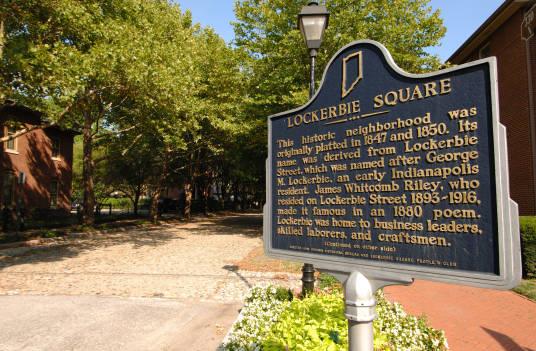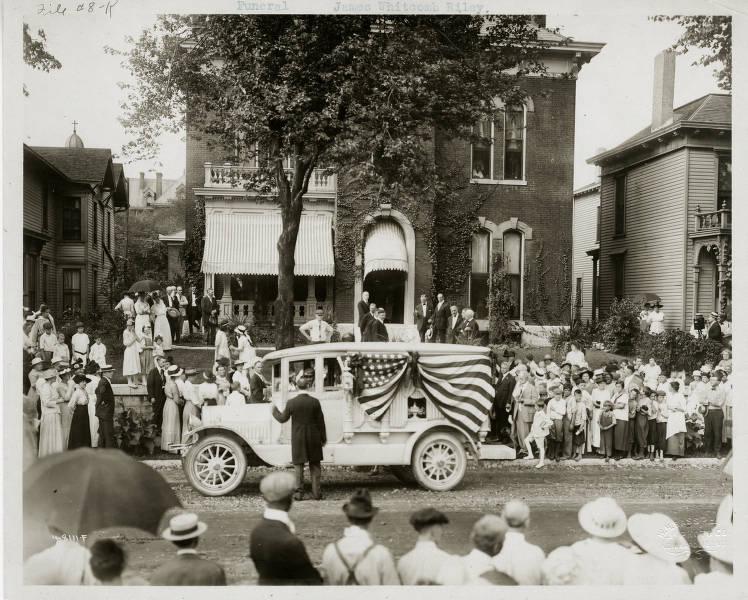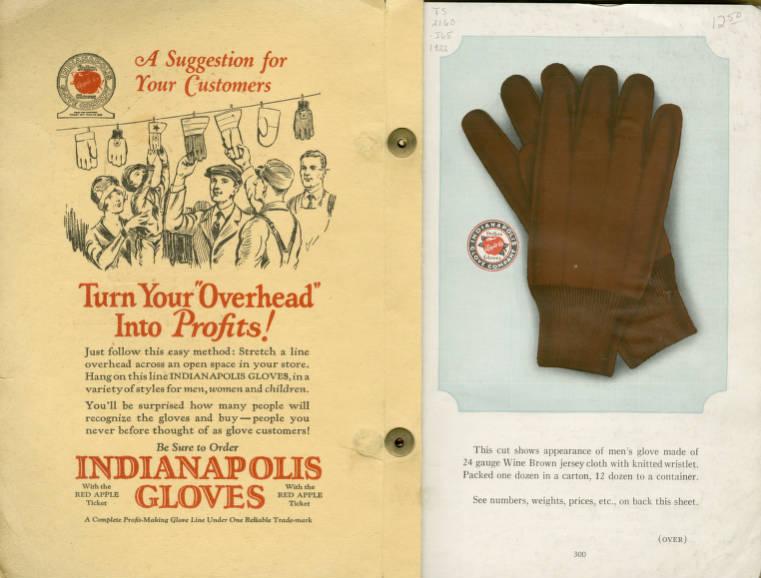Lockerbie Square is a historic district bounded by Michigan, Davidson, New York, and New Jersey streets.

In 1830 Janet and Thomas McQuat settled five-eighths of a mile east of the Circle on property that forms the western portion of Lockerbie Square. Janet named Lockerbie Street in honor of her father, George Murray Lockerbie, a Scottish immigrant and well-known citizen who moved to the area in 1831.
People began moving to Lockerbie Square during the Civil War. Expansion of the German neighborhood south of Lockerbie created the building of 45 new homes on property subdivided by Timothy R. Fletcher and Janet McQuat during the 1860s.
By 1900 Lockerbie Square contained larger residential homes and smaller cottages mixed with buildings for commerce and light industry. During this time Indiana poet lived at 528 Lockerbie Street. From 1893 until his death, Riley boarded in the home of Major and Mrs. Charles (Magdelena) Holstein.
In 1916, following the death of Riley and then of Magdelena Holstein, purchased the Holstein’s home and held it in trust for the James Whitcomb Riley Memorial Association (renamed ). Some members of the original Riley Memorial Committee proposed converting part of the neighborhood into a recreational area, but they settled on building the as a memorial to the poet instead. Nevertheless, RCF opened the Holstein residence as the in 1922. Still operated as a museum, the Riley house provided an anchor and inspiration for later redevelopment of the neighborhood.

After World War I, increased industry downtown caused many middle-class residents to move to the suburbs. Rooming houses and absentee landlords increased in the 1930s. By 1950 many homes in the neighborhood required attention and repair.
In 1958, the Metropolitan Planning Department proposed a revitalization for the 500 block of Lockerbie Street to be called Lockerbie Fair. The department proposed a memorial to James Whitcomb Riley through restoration of the area’s appearance as it looked in Riley’s lifetime. The plan included 1890s Midwestern Main Street complete with horse-drawn carriages and specialty shops, as well as a children’s park. The plan had some similarities to what the James Whitcomb Riley Memorial Committee had proposed in 1916.
Revitalization of the neighborhood under the Lockerbie Fair plan never materialized. However, and architects Edward D. Pierre and Edward D. James participated in the restoration effort, which resulted in the founding of in 1960. The foundation worked to have the Indiana General Assembly adopt legislation that set up the in 1967. One of the first tasks of the preservation commission involved working with Landmarks to establish Lockerbie Square as a historic district. The area was added to the National Register of Historic Places in 1973.
Lockerbie Square Historic District grew into a successful revitalized neighborhood. The restoration of private homes began in the 1960s. Young professionals and their families moved into the neighborhood in the 1970s.

Landmarks also rescued several endangered buildings and moved them to Lockerbie. Therefore, the redevelopment of Lockerbie Square involved a unique mix of houses original to the neighborhood with period houses moved as fill-ins where structures no long survived.
In 1984, the former Indianapolis Glove Company on Park Avenue was converted into condominiums. The Glove Company was the first early 1900s factory building in the area to be converted for reuse. , located at 611 N. Park Avenue, followed in 1986.
By the end of the 20th century, most industrial and residential buildings had been renovated, and some new homes and townhouses were built in the neighborhood. Lockerbie Square began the trend of revitalization of historic urban neighborhoods in the Indianapolis downtown area.

Is this your community?
Do you have photos or stories?
Contribute to this page by emailing us your suggestions.